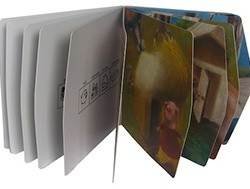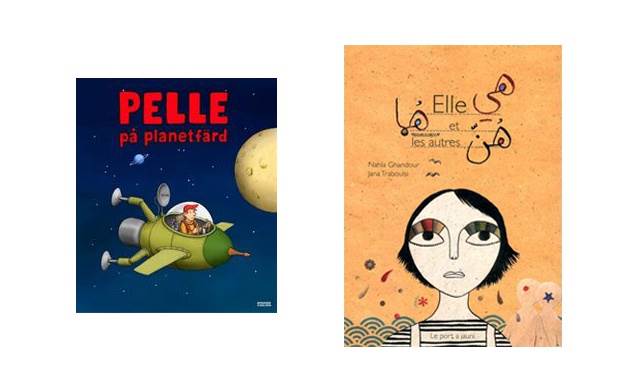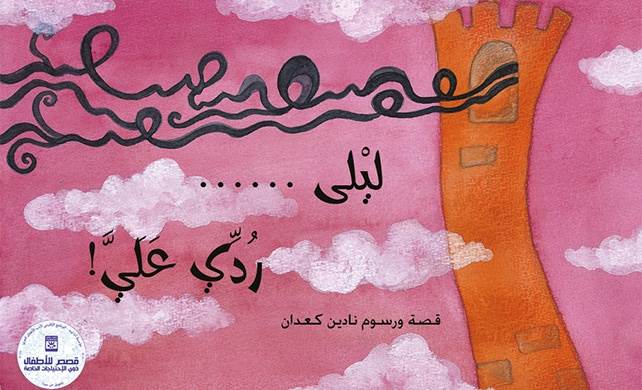How to get inspiration from inclusive books around the world
Published on: 07 December 2015 Author: Alex Strick
A new report has some fascinating ideas for inclusive and accessible books in the UK, says disability consultant Alex Strick.

An innovative report has focused on the theme of disability in the UK book world - after identifying it as a particular 'gap'.
The project comes from Outside In World, an organisation that wants to see more books from other countries published in the UK.
Their report, Reading the Way, seeks out examples of especially good inclusive and accessible books. It offers a powerful picture of the way disability is approached in children's literature around the world.
Along the way, it comes up with interesting ideas for parents and publishers alike.
Road-testing books
The real strength of the project lies in the fact that it is about much more than just creating a useful booklist. It thoroughly 'road-tests' these books with a wide range of audiences.
Outside In World asked a team of professionals, with expertise in disability and books, to assess the titles. They also set up physical focus groups to collect the views of children, parents, teachers, publishers and disability organisations.
The result is a valuable bank of opinions on each book, helping to identify which might appeal to UK audiences - and publishers.
Perhaps even more powerfully, the project has also generated learning points, which could shape the inclusive and accessible books of the future.
Look at good practice
The report looks at 60 books from 15 different countries. These include books that are particularly accessible - perhaps offering tactile stimulation or signs or symbols. There are also books that show positive messages or images.
Discovering these books highlights potential 'gaps' in the UK market, but also explores good practice.
For example, there are some intriguing books that use communication symbols.
This is an underrepresented area in the UK. No known mainstream books feature these symbols.
Yet statistics tell us that two to three children in every UK classroom have significant communication difficulties.
Also, as many as 60% of children choose symbol-supported materials over unsupported text, since they provide extra visual stimulation and motivation to learn.
Symbol systems like Widgit and Picture Communication Symbols (PCS) can therefore offer a valuable way of accessing books.
Books that stand out
The report features books such as a Swedish title, Pelle på Planetfärd (translated as Pelle in Space) by Jan Lööf. It boasts unusual artwork, reminiscent of Tintin, and an equally unusual story of a boy's adventure in space. It is supported by Widgit symbols.

Another gem is a whole series of board books from Italy.
The 'Pesci Parlanti' books feature well-known fairy tales, such as Goldilocks and The Three Little Pigs. They are made more accessible to children with communication difficulties by using simple sentence structure, easy-turn pages and PCS symbols.
These proved to be extremely popular in the focus groups, particularly in special schools - but also mainstream ones, too.
Advice for publishers
As well as highlighting specific titles, the report offers up advice for UK book creators.
It urges publishers to consider ways to make any book more accessible from the outset.
It also suggests working with existing specialists such as ITV Signed Stories, the RNIB Library, Living Paintings and Access2Books.
Doing so can ensure that books are available to as many audiences as possible, through British Sign Language, large print, braille and tactile versions.
Disabled characters
There is also much to be learned from looking at innovative ways of including disability in storylines.
The report affirms the need for the natural, casual inclusion of disabled characters.
Interestingly, it also urges the UK book industry not to dismiss books that focus on the challenges faced by disabled children or which take an unusual approach.
The project also cites the importance of avoiding stereotypes and keeping authenticity. It found that the more convincing depictions of disabled people were mostly written from personal experience or clearly involved extensive research.
Author Nahla Ghandour used her own childhood experiences as inspiration for She and the Others, a very unusual story two-chapter book about a new girl at school, published in the Lebanon.
While another author-illustrator (Nadine Kaadan from Syria) was inspired by her friendship with a deaf colleague to create Answer Me Leila. It is based loosely on the story of Rapunzel, where the heroine communicates using signs.

Not a 'single story'
The report also reminds us of the need to avoid sensationalising conditions, such as autism, or showing only the extremes.
The landscape needs to reflect a range of different experiences to ensure that readers see a spectrum of views - as opposed to a 'single story'.
It is also interesting that the project highlights some forms of disability rarely found in books, such as facial disfigurement, complex needs and selective mutism.
Topics: Fairy tale, Picture book, Around the world, Bookmark, Disability, Inclusive, Features






Add a comment